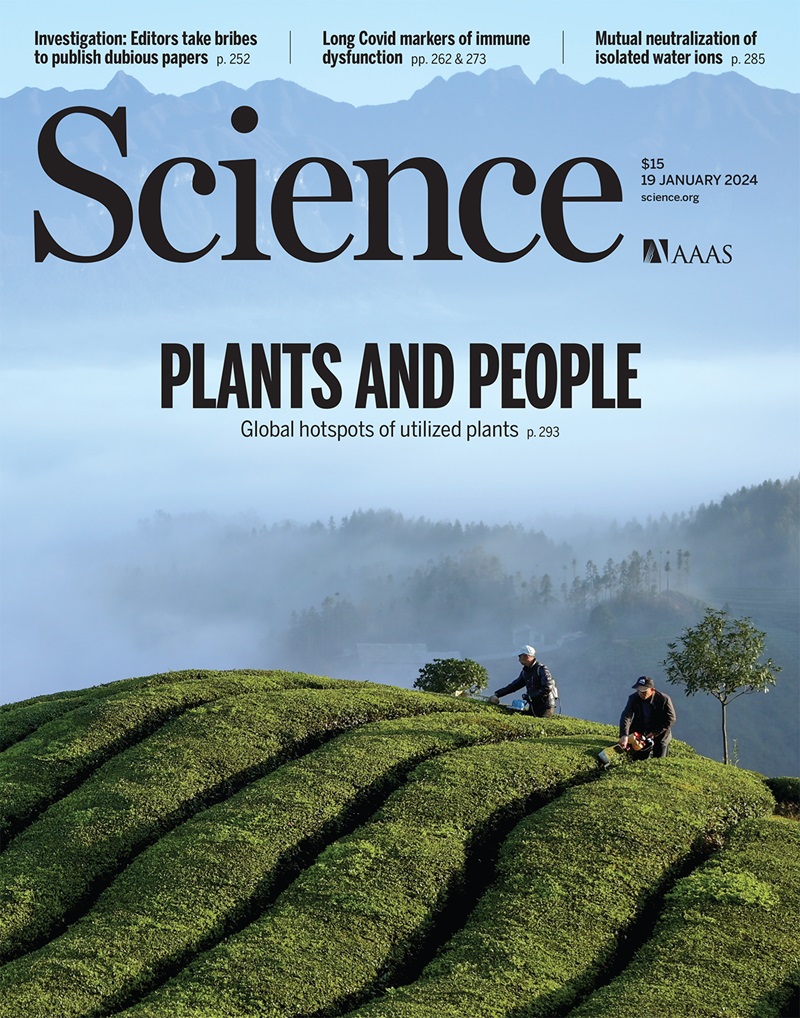Midline assembloids reveal regulators of human axon guidance
IF 45.8
1区 综合性期刊
Q1 MULTIDISCIPLINARY SCIENCES
引用次数: 0
Abstract
Organizers orchestrate cell patterning and axon guidance in the developing nervous system. Although nonhuman models have led to fundamental discoveries about floor plate (FP)–mediated midline organization, an experimental model of the human FP would enable insights into human neurodevelopment and midline connectivity. Here, we developed organoids resembling human FP (hFpOs) and assembled them with human spinal cord organoids (hSpOs) to generate midline assembloids (hMAs). We demonstrate that hFpOs promote ventral patterning, commissural axon guidance, and bilateral connectivity. To investigate midline regulators, we profiled the hFpO secretome, identifying 27 human-enriched genes compared with mouse. In an arrayed CRISPR screen of hMAs, we discovered that loss of GALNT2 and PLD3 impaired FP–mediated guidance of axons. This platform holds promise for revealing aspects of human-specific neurobiology and disease.
中线集合揭示了人类轴突引导的调节因子
组织者在发育中的神经系统中协调细胞模式和轴突引导。虽然非人类模型已经导致了关于底板(FP)介导的中线组织的基本发现,但人类FP的实验模型将使我们能够深入了解人类神经发育和中线连接。在这里,我们开发了类似于人类FP (hFpOs)的类器官,并将它们与人类脊髓类器官(hspo)组装在一起,以产生中线组装体(hma)。我们证明hFpOs促进腹侧模式,交联轴突引导和双边连通性。为了研究中线调节因子,我们分析了hFpO分泌组,与小鼠相比鉴定了27个人类富集的基因。在hMAs的排列CRISPR筛选中,我们发现GALNT2和PLD3的缺失会损害fp介导的轴突引导。这个平台有望揭示人类特异性神经生物学和疾病的各个方面。
本文章由计算机程序翻译,如有差异,请以英文原文为准。
求助全文
约1分钟内获得全文
求助全文
来源期刊

Science
综合性期刊-综合性期刊
CiteScore
61.10
自引率
0.90%
发文量
0
审稿时长
2.1 months
期刊介绍:
Science is a leading outlet for scientific news, commentary, and cutting-edge research. Through its print and online incarnations, Science reaches an estimated worldwide readership of more than one million. Science’s authorship is global too, and its articles consistently rank among the world's most cited research.
Science serves as a forum for discussion of important issues related to the advancement of science by publishing material on which a consensus has been reached as well as including the presentation of minority or conflicting points of view. Accordingly, all articles published in Science—including editorials, news and comment, and book reviews—are signed and reflect the individual views of the authors and not official points of view adopted by AAAS or the institutions with which the authors are affiliated.
Science seeks to publish those papers that are most influential in their fields or across fields and that will significantly advance scientific understanding. Selected papers should present novel and broadly important data, syntheses, or concepts. They should merit recognition by the wider scientific community and general public provided by publication in Science, beyond that provided by specialty journals. Science welcomes submissions from all fields of science and from any source. The editors are committed to the prompt evaluation and publication of submitted papers while upholding high standards that support reproducibility of published research. Science is published weekly; selected papers are published online ahead of print.
 求助内容:
求助内容: 应助结果提醒方式:
应助结果提醒方式:


